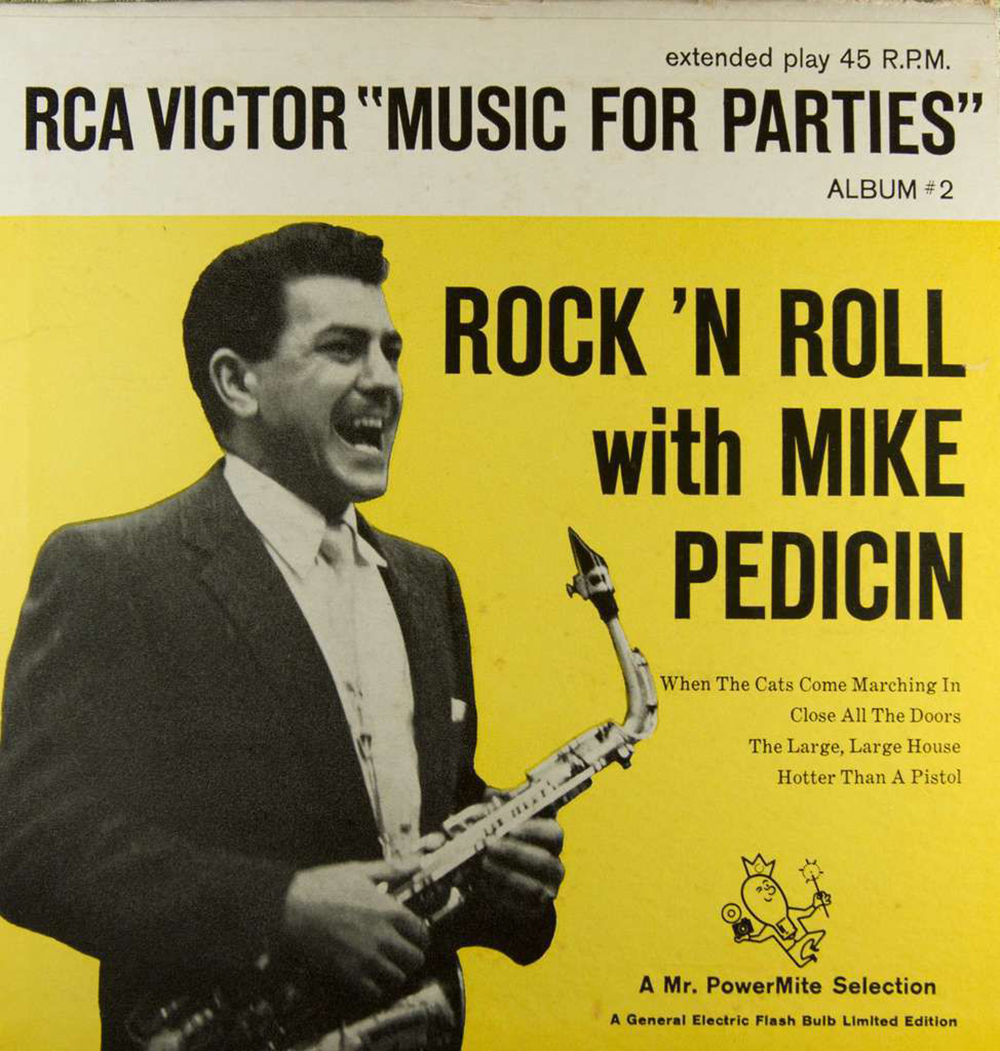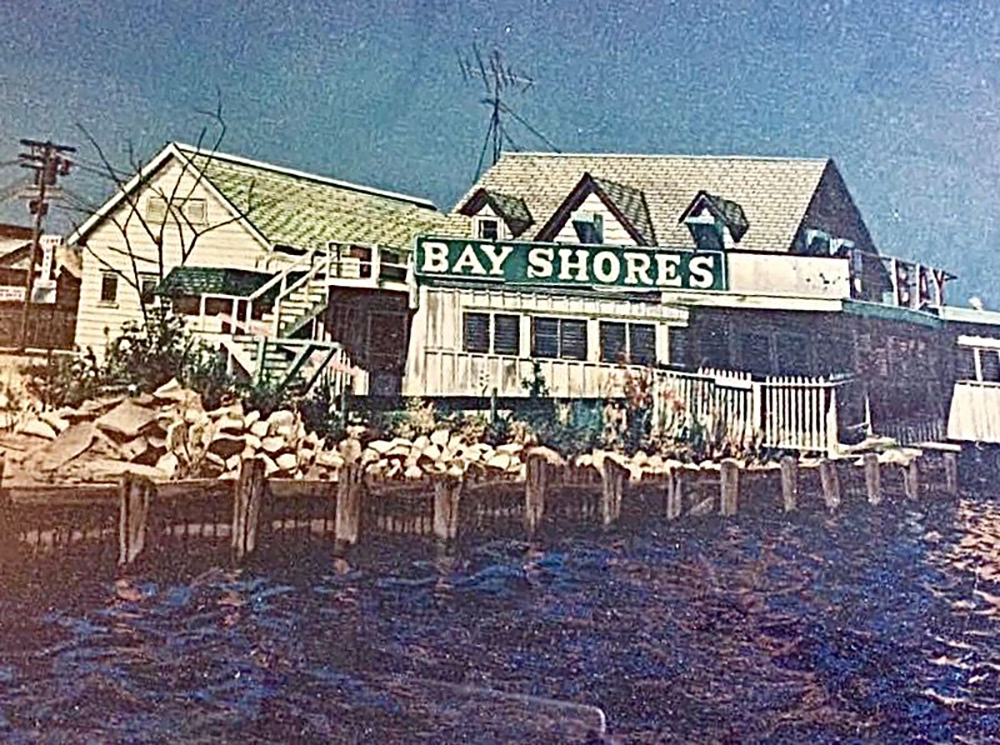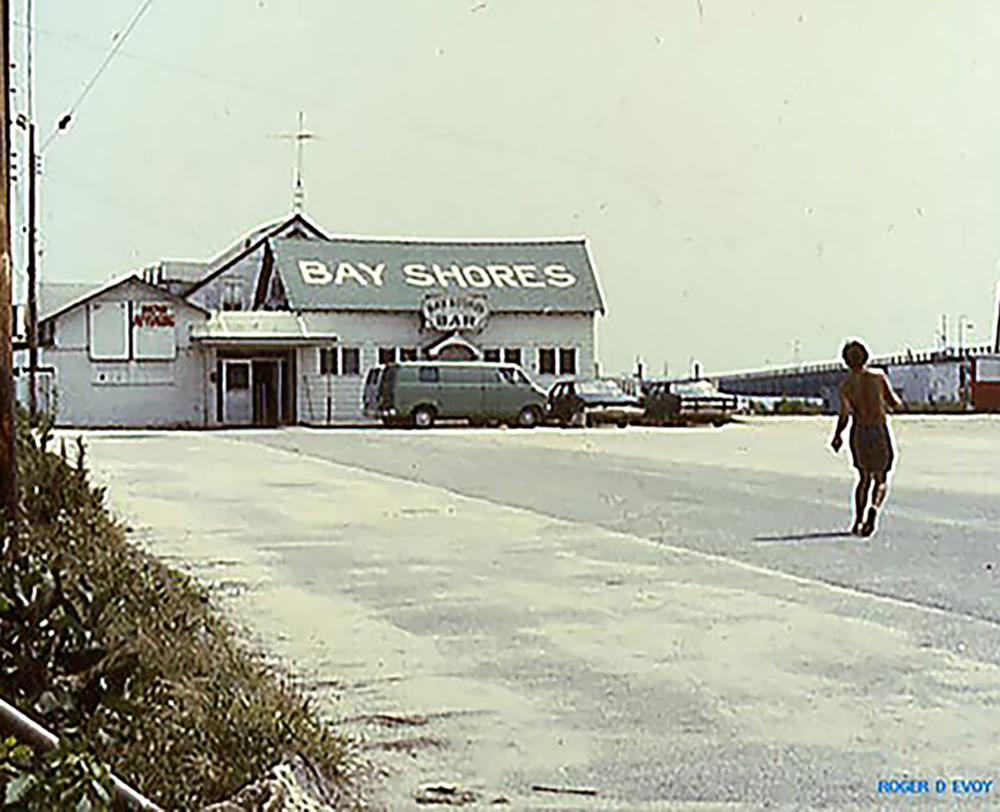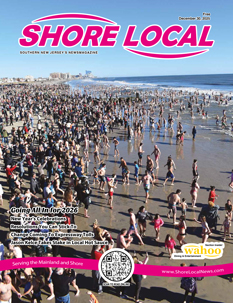By Bruce Klauber
It’s been said more than once by pop music historians that Somers Point was one of the birthplaces of rock ‘n’ roll. That may or not be true, but there is no disputing that legendary Somers Point nightspots like Tony Mart were venues where many rock pioneers performed and developed.
The history of Tony Mart and that club’s importance in rock ‘n’ roll history have been well documented in Shore Local by Bill Kelly and Carmen Marotta, but during the real heyday of Somers Point clubs, there were several that rivaled Tony Mart. One was Bayshores. It may not have made musical history ala Tony Mart, but it was plenty popular and continues to be fondly remembered today.
Though the actual beginning of Bayshores is sketchy, there are photos that indicate it may have been around since the 1920s. We do know that it was there during World War II.

On Sept. 14, 1944, what came to be called the Great Atlantic Hurricane hit the shore area with major force. Telephone polls were washed away, cars were stranded and bridges were demolished. The storm destroyed Bayshores’ dance floor, which extended over the bay. The following year, Tony Mart opened across the street. There was no rivalry. More clubs meant more people.
In the earlier days of music at Bayshores, Vince Rennich, who tended bar at Bayshores from 1952 until 1957, recalled, “Before 1953, there was a partition across the bar, with piano music for older people on one side and rock ‘n’ roll on the other side for the kids.” The actual scene during the late 1950s, after the “piano music for older people” was discontinued, was wild. Artist Charles Lounsberry was a frequent visitor.
“Wow! What great times we had in Somers Point,” he remembered. “We went to Bayshores first, then over to Tony Mart’s, then up to The Anchorage and back to Bayshores then back to Tony Mart’s then back to The Anchorage. Around one in the morning, we headed to Mothers and or the Dunes. By then, whatever time it was led us to the Point Diner, then to bed, work or the beach. And then we started all over again.”
Noted guitarist and record producer Dennis Coffey played often at Bayshores in the late 1950s with his group, The Royaltones. Coffey recalled, “There were two stages: one in the back by the dance floor that stretched over the bay, and the other by the front bar, with a partition that separated the two, and older folks staying in the back and younger kids upfront where the loud music was played.

“Early rock ‘n’ roll was born at Bayshores with the dance bands like Mike Pedicin, Sr., the Carroll Brothers, and Rocco & The Saints. Pedicin had a regional hit with ‘Shake a Hand,’ his signature song; while Pete Carroll was known for playing ‘Sweet Georgia Brown.’ Rocco & The Saints had a 16-year-old drummer named Bobby Rydell and a young trumpeter named Frankie Avalon. Since the music in Somers Point had to be off by 2 a.m. and the bar cleared by 3 a.m., the owners built the Dunes nightclub out on the marshes on Longport Boulevard where the liquor licenses were permitted to operate 24 hours a day. We went from Bayshores to play at the Dunes after hours to make extra money and most of the crowds went there, too.”
Out of all the artists booked to play Bayshores, and those acts included Joey Dee & The Starlighters, Tito Mambo, and Billy Duke and His Dukes, the artist most closely associated with Bayshores was saxophonist Mike Pedicin, Sr., who performed there, off and on, from the late 1940s until the 1960s.
According to rock historian Andy Washington of the Narkive Newsgroup, “Pedicin may have even been one of the guys to pioneer the rock ‘n’ roll sound. Coming of age in the era of Benny Goodman and Glenn Miller, he helped to develop a hybrid musical style which incorporated elements of swing and rhythm and blues, and led directly to the commercial genesis of rock ‘n’ roll.”
Saxophonist Michael Pedicin, Jr., long one of the premier players in the jazz world, remembers the scene at Bayshores with his father.
“My experiences at Bayshores in Somers Point were quite amazing. My dad would begin his summer schedule, which was playing seven nights and two matinees on Saturday and Sunday weekly, for 10 solid weeks. This routine probably lasted for close to 20 years.
“The crowds were always phenomenal and the happiest you can imagine. They always packed the place. There was dancing, laughter and people who were just having a free-spirited time. I would say that the majority of the kids who went to Bayshores were from Philadelphia and its suburbs, probably from Villanova, Saint Joseph’s, Penn and a few who were not college students. They were just hard-working young folks who had come down the shore to have fun and meet future potential dates. There were no egos, no socio-economic judgments and no discrimination.
“The best part for me, of course, was the fact that my dad had the incredible patience that he did to let me ‘sit in’ with his band on the matinees. So, on Saturday and Sunday afternoons, I would be on the bandstand with my dad and his band mates, learning and experiencing playing live music while watching what an incredibly wonderful effect good music had on others. I was in heaven!”
Pedicin’s popularity and unique, saxophone-lead sound led to a contract with the RCA label, which began in 1955. A number of recording sessions over the next several years yielded no big hits, and after nine singles and three years, RCA dropped him. In retrospect, the songs Pedicin was given to record by RCA were less than great. But in 1958, Pedicin hit paydirt with the recording of “Shake a Hand” for the Cameo/Parkway record label. It may have only reached a chart position of No. 71, but it was likely much bigger than the chart indicated in that its popularity extended way beyond the region and garnered heavy airplay from the influential Dick Clark and Alan Freed.

By the late 1960s the musical landscape was changing. Pedicin had moved on to other rooms, and acts at Bayshores included a band called Johnny Caswell and the Crystal Mansion, kind of a poor man’s Joe Cocker-type group; Charlie Brown and Hereafter, almost a Rod Stewart cover band.
By the early 1980s, the party was ending, as only Bayshores, Tony Mart and ThAnchorage – three of the many Somers Point nightspots that used live music – were clearly on the way out. Harris Berman, a lawyer and Camden County prosecutor, used the proceeds he and his brother made from the sale of a Florida hotel to buy Bayshores. The Berman brothers tore it down and built the Waterfront, which later became The Point Tiki Bar.
Bruce Klauber is the author of four books, an award-winning music journalist, concert and record producer and publicist, producer of the Warner Brothers and Hudson Music “Jazz Legends” film series, and performs both as a drummer and vocalist.








